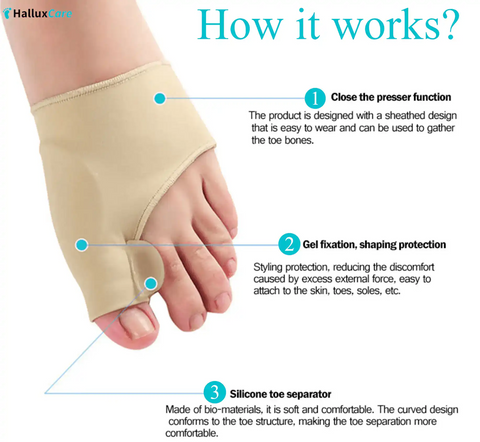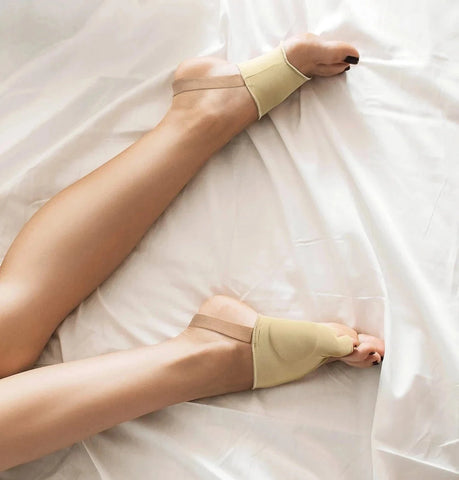Choosing the Best Gym Exercise for Plantar Fasciitis and Heel Spurs
Last Updated: 2025-09-14
Author: Dr. Jamie Reynolds, DPM, Board-Certified Podiatrist
Dealing with plantar fasciitis or a heel spur can make staying active a real challenge. Many people wonder about safe gym exercises for plantar fasciitis, especially when pain flares up. Recent podiatric guidance, echoed by medical communities like the American Academy of Orthopaedic Surgeons (AAOS)[^1] and the Mayo Clinic[^2], suggests: skip the treadmill and try the elliptical or Arc Trainer, since these machines help keep your foot flat and reduce stress on the heel. Below, we explore why these options may work better and provide expert-backed tips for managing foot pain at the gym.
Why Treadmills May Aggravate Plantar Fasciitis
- Increased Impact: Running or walking on a treadmill leads to repeated impact on the heel and arch, which can aggravate the plantar fascia—a thick band of tissue connecting your heel bone to your toes.
- Foot Mechanics: The rolling motion of your foot during treadmill activities stresses the plantar fascia, especially if you already have inflammation or a heel spur.
- Aggravates Symptoms: According to the American College of Foot and Ankle Surgeons[^3], repetitive impact and improper footwear can worsen plantar fasciitis symptoms and delay recovery.
Elliptical and Arc Trainer: A Gentler Alternative
- Low-Impact Motion: Elliptical machines and Arc Trainers offer a fluid, gliding motion that minimizes heel strike and reduces the repetitive trauma associated with other cardio machines.
- Foot Stays Flat: Your foot remains mostly flat throughout the motion, decreasing tension on the plantar fascia and heel spur.
- Adjustable Intensity: These machines let you tailor resistance and speed to your comfort and fitness level, allowing for a safer, customized workout.
Additional Benefits:
- Lower risk of re-injury or symptom flare-ups.
- Maintains cardiovascular fitness without excessive heel strain.
- Engages glutes, hamstrings, quads, and the upper body for full-body conditioning.
4.9 ⭐⭐⭐⭐⭐ ( 1843 reviews )
Other Gym Tips for Plantar Fasciitis and Heel Spurs
1. Warm Up and Stretch
Calf stretches and toe stretches before and after exercise help loosen tight tissues and prepare your feet for activity[^4]. Gentle mobility work can reduce the risk of flare-ups.
2. Choose Supportive Footwear
Wear shoes with robust arch support and cushioning, as recommended by the American Orthopaedic Foot & Ankle Society[^5]. Consider medical-grade orthotic inserts for additional protection and shock absorption.
3. Mix Up Your Routine
Try cycling or rowing machines for alternative, low-impact cardio options. Incorporate lower-body strength training to build muscular support for your feet and ankles.
4. Listen to Your Body
If pain increases, stop the activity and allow time for rest and recovery. Gradually increase workout intensity and duration so your feet can adapt without aggravating symptoms.
5. Use Supportive Accessories
Night splints, compression sleeves, and ice therapy can help manage symptoms and aid recovery[^2]. For bunion pain or related foot issues, medical-grade sleeves can provide additional comfort and joint alignment support.
Key Takeaways
- High-impact gym exercises, especially treadmill running or walking, may worsen plantar fasciitis.
- Low-impact machines like the elliptical and Arc Trainer are recommended to reduce heel and arch stress.
- Supportive footwear, stretching, and listening to your body are essential for prevention and management.
- Accessories like orthotics, sleeves, and night splints may further enhance comfort and recovery.
Practical Tips & Real-World Applications
- Schedule regular stretching: Make calf and plantar fascia stretches part of your daily routine, not just before workouts.
- Alternate cardio machines: If your gym has both the elliptical and Arc Trainer, alternate between them to keep workouts fresh and prevent overuse.
- Upgrade your shoes: Visit a specialty running or orthopedic shoe store for a proper fitting.
- Track your symptoms: Keep a brief log of pain levels and activities—this can help identify triggers and track improvement.
- Consult a professional: If your symptoms persist or worsen, see a podiatrist or physical therapist for a personalized plan.
FAQs
Q: Can I ever go back to treadmill running after plantar fasciitis?
A: Many people can return to treadmill use gradually once symptoms resolve, but it’s vital to do so under medical guidance, with proper footwear and stretching.
Q: Are barefoot or minimalist shoes recommended?
A: Most experts do not recommend barefoot or minimalist shoes for those with plantar fasciitis, as they lack adequate arch and heel support[^4].
Q: Is swimming a good option?
A: Yes! Swimming is an excellent, non-weight-bearing exercise that allows you to maintain fitness without stressing the plantar fascia.
Q: How long does plantar fasciitis usually last?
A: With proper care, symptoms often improve within a few months, but chronic cases may require medical intervention[^2].
Join the Conversation!
What exercise machines or routines have helped you relieve plantar fasciitis or heel pain? Share your experiences and tips in the comments below—your advice could help someone else stay active and pain-free!
Recommended HalluxCare Bunion Relief Products
If you're looking for relief from bunion pain, consider using the Orthopedic Bunion Pain Relief & Correction Sleeve, which provides support and helps to alleviate discomfort.
For additional protection, the Tailor's Bunion Bunionette Pain Relief Protection Sleeves are designed to offer comfort and protection for bunionette pain.
To nourish and soothe the skin around bunions, as well as to promote healthy hair, consider the Jamaica Black Castor Oil Soothing Oil. Known for its moisturizing and anti-inflammatory properties, it helps alleviate discomfort around bunions and supports hair growth and scalp health.
References
- American Academy of Orthopaedic Surgeons. Plantar Fasciitis and Bone Spurs. https://orthoinfo.aaos.org/en/diseases--conditions/plantar-fasciitis-and-bone-spurs/
- Mayo Clinic. Plantar fasciitis. https://www.mayoclinic.org/diseases-conditions/plantar-fasciitis/diagnosis-treatment/drc-20354846
- American College of Foot and Ankle Surgeons. Heel Pain. https://www.foothealthfacts.org/conditions/heel-pain
- American Orthopaedic Foot & Ankle Society. Plantar Fasciitis and Heel Spur. https://www.aofas.org/footcaremd/conditions/ailments-of-the-heel/plantar-fasciitis-and-heel-spur
- American Orthopaedic Foot & Ankle Society. Footwear Recommendations. https://www.aofas.org/footcaremd/treatments/footwear




